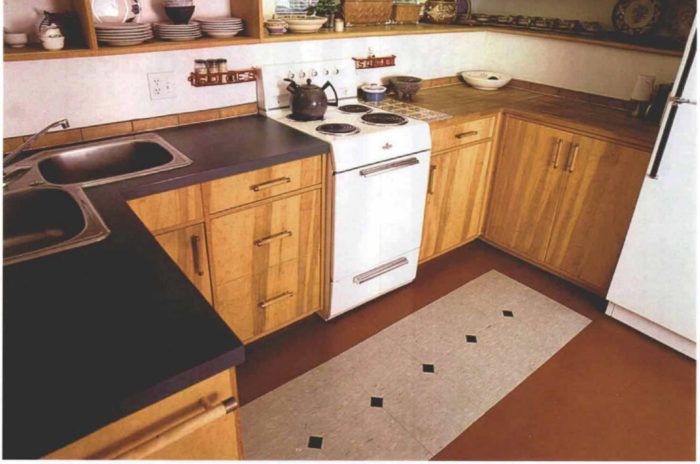Site-Built Kitchen
Construct base cabinets with a carpenter's pragmatism and a cabinetmaker's precision.

Synopsis: Although kitchen cabinets are more often made in a millwork shop, the author of this article shows how a set of simple frameless cabinets can be made on site. The technique is straightforward, tools are few.
I built my first kitchen 11 years ago. It included 20 ft. of base cabinets, 14 ft. of uppers, 6 ft. of full-height pantry units, a 4-ft. by 6-ft. cooking island and a built-in computer desk. The job cost almost $7,000, and it was the biggest commission I had undertaken in my fledgling shop. When I finally pulled up to the job in a 24-ft. delivery truck to install all the parts, I was sweating more from apprehension than exertion.
I took a look around while the driver and his mate started bringing in the cabinets. Funny how narrow an alcove looks when your pantry units are standing beside it. And who put that windowsill there? Was this the same house I measured?
As I walked around I got more and more panicky. I felt like Alice, alternately crowding the ceilings and then shrinking to the floor. It didn’t seem remotely possible that what I had put together on the level, unencumbered surface of my shop floor could be reassembled here between these unaccommodatingly real, solid walls. The driver tapped my shoulder and pointed to one of the full-height units. It was lying on the floor next to its opening.
“Anything wrong?” I asked, with the sinking certainty that there was.
Don Watanabe, the site carpenter, was holding a level against the low ceiling over the cabinet’s niche. The bubble was nowhere to be seen. Don smiled inscrutably. The converging lines of the finished floor and the ceiling weren’t even close to parallel.
Cheat it,” he said.
Take the shop along
Anyone who has built something in the shop for installation on a job site will recognize the scene. There are so many things to remember that it’s nearly impossible to record all the data without dropping a detail here and there. And details can be expensive.
Three years ago, with my enthusiasm for plywood boxes flagging, I decided to get out of the full-time cabinet business and into remodeling. This has meant developing some different procedures for building cabinets and getting by with a no-frills complement of tools.
The heart of any cabinet shop is the table saw, and although I have learned to do a great deal with my old #1555 Rockwell radial-arm saw, when it comes to building a kitchen, the table saw is indispensable. Mine is a 10-in. saw, and I use a thin kerf, 80-tooth carbide-tipped alternating-top-bevel blade on it. This makes smooth cuts in plywood, even across the grain. I still take along the radial-arm saw, though — partly because it’s mounted in an 8-ft. table, which I use for everything from workbench to router table to extension supports for the table saw.
For more photos, drawings, and details, click the View PDF button below:
Fine Homebuilding Recommended Products
Fine Homebuilding receives a commission for items purchased through links on this site, including Amazon Associates and other affiliate advertising programs.

Plate Level

Anchor Bolt Marker

Smart String Line


























